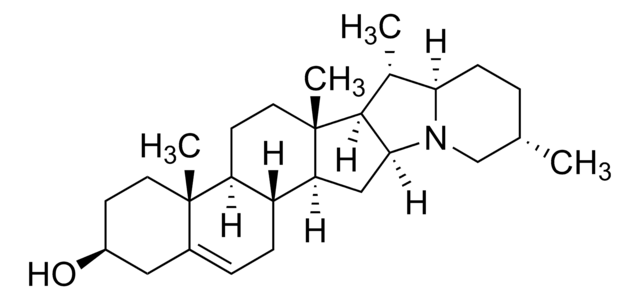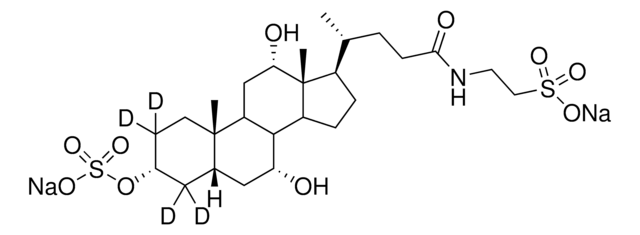SMB00807
Glycolithocholate sulfate
≥95% (HPLC)
Synonim(y):
Glycolithocholic acid 3-sulfate, Sulfoglycolithocholic acid, Sulfolithocholylglycine
About This Item
Polecane produkty
Próba
≥95% (HPLC)
Warunki transportu
wet ice
temp. przechowywania
−20°C
InChI
1S/C26H43NO7S/c1-16(4-9-23(28)27-15-24(29)30)20-7-8-21-19-6-5-17-14-18(34-35(31,32)33)10-12-25(17,2)22(19)11-13-26(20,21)3/h16-22H,4-15H2,1-3H3,(H,27,28)(H,29,30)(H,31,32,33)/p-1/t16-,17-,18-,19+,20-,21+,22+,25+,26-/m1/s1
Klucz InChI
FHXBAFXQVZOILS-OETIFKLTSA-M
Opis ogólny
Zastosowanie
Cechy i korzyści
- Can be used in Metabolomics and Biochemical research
- High-quality compound suitable for multiple research applications
Inne uwagi
Kod klasy składowania
11 - Combustible Solids
Klasa zagrożenia wodnego (WGK)
WGK 3
Temperatura zapłonu (°F)
Not applicable
Temperatura zapłonu (°C)
Not applicable
Certyfikaty analizy (CoA)
Poszukaj Certyfikaty analizy (CoA), wpisując numer partii/serii produktów. Numery serii i partii można znaleźć na etykiecie produktu po słowach „seria” lub „partia”.
Masz już ten produkt?
Dokumenty związane z niedawno zakupionymi produktami zostały zamieszczone w Bibliotece dokumentów.
Nasz zespół naukowców ma doświadczenie we wszystkich obszarach badań, w tym w naukach przyrodniczych, materiałoznawstwie, syntezie chemicznej, chromatografii, analityce i wielu innych dziedzinach.
Skontaktuj się z zespołem ds. pomocy technicznej







